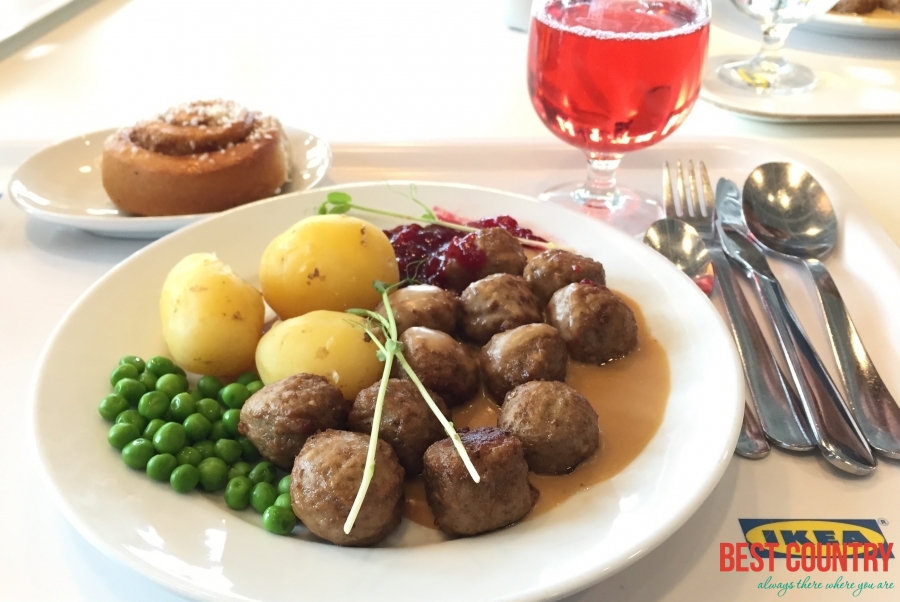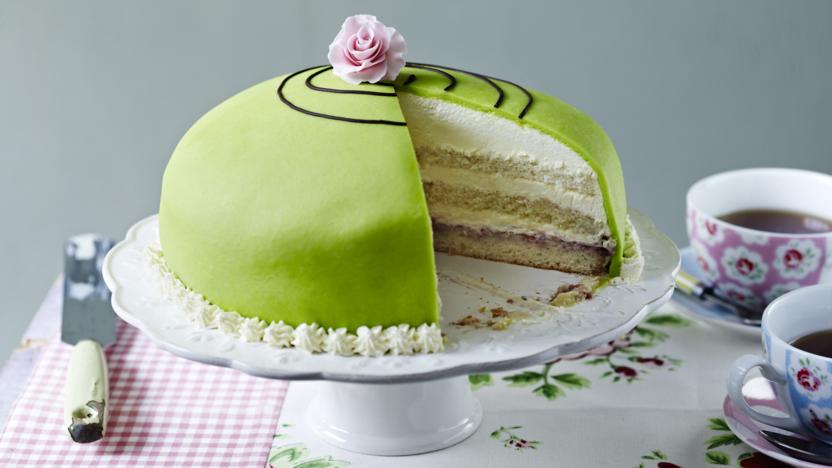Sweden is a culinary nation shaped by its countryside. The summer — with long, light days and cool evenings — produces fruit that grows slowly and has rich flavors. The coastline provides high-quality fish and shellfish. And the vast forests are full of berries, mushrooms and game, which all have a special place in Swedish cuisine.
Swedish food & drink
 Sweden’s nature and the produce it yields create opportunities for exclusive culinary experiences. And as the Swedish food scene grows, a new style of cooking is developing.
Sweden’s nature and the produce it yields create opportunities for exclusive culinary experiences. And as the Swedish food scene grows, a new style of cooking is developing.
Swedish chefs are returning to their culinary roots, rediscovering classic Swedish dishes and fantastic local seasonal ingredients, and giving them a modern twist. Swedish chefs are renowned for their ability to make the best of this blend of tradition and innovation.
In recent years there has been a boom in top-class restaurants in Stockholm, Gothenburg and Malmö, but also in smaller towns and the countryside. One of the most praised restaurants in Sweden is tucked away on an island in the Stockholm archipelago.
There is a general trend towards serving good food, as well as increasing demand for it. Swedes are curious about food and keen to learn: they travel for gourmet experiences, and when they come home they demand interesting and innovative fine dining.
10 things to know about Sweden's food culture
It’s safe to say Sweden’s food culture is much more than the iconic meatballs and chewy fish-shaped candy. Here are ten things you should know about food traditions essential to Swede’s everyday dining.
Lingonberry – Sweden’s favorite sauce
Just like ketchup and mustard, lingonberry sauce is widely used to accompany a variety of dishes, from meatballs and pancakes to porridge and blood pudding. But despite its sweetness, it is rarely used on bread.
Thanks to the Right of Public Access (Allemansrätten), which gives everyone the freedom to roam and enjoy nature, many Swedes grow up picking lingonberries in the forest, and using these tiny tart red fruits to make the jam-like preserve.
Pickled herring – center of the smorgasbord
You might swap out meatballs (köttbullar) for mini sausages (prinskorv) or pick cured salmon (gravad lax) rather than smoked, but your smorgasbord wouldn’t be complete without pickled herring (sill).
For this fishy favorite remains the basis of every typical Swedish buffet. With an abundance of herring in both the North and Baltic Seas, Swedes have been pickling since the middle ages, mainly as a way of preserving the fish for storage and transportation.
Pickled herring comes in a variety of flavors – mustard, onion, garlic and dill, to name a few – and is often eaten with boiled potatoes, sour cream, chopped chives, hard sharp cheese, sometimes boiled eggs, and of course, crisp bread.
Crisp bread – hard to beat
In addition to bread and butter, you’ll often find a type of crisp bread called knäckebröd served alongside your main meal.
This is what the Swedes tend to reach for. Once considered poor man’s food, crisp bread has been baked in Sweden for over 500 years, can last for at least a year if stored properly, and remains among the most versatile edible products.
The National Board of Health and Welfare (Socialstyrelsen) ran a campaign in the 1970s suggesting Swedes should eat six to eight slices of bread a day, including crisp bread.
This comes in various shapes, thicknesses and flavors, with entire store shelves devoted to it. Crisp bread can be topped with anything from sliced boiled eggs and caviar squeezed from a tube for breakfast; to ham, cheese and cucumber slices for lunch; to just plain butter along with your dinner.
Open sandwiches
When you order a sandwich, don’t be surprised if it involves just a single slice of bread. The concept of open sandwiches dates back to the 15th century when thick slabs of bread were used as plates.
In Sweden, the shrimp sandwich (räksmörgås) remains the option fit for a king. Piled high with a mix of boiled egg slices, lettuce, tomato and cucumber, this seafood snack is often topped with creamy romsås – crème fraîche blended with dill sprigs and roe.
Shrimp sandwiches are such an integral part of Swedish culture, they have inspired a popular saying: “glida in på en räkmacka” (literally “glide in on a shrimp sandwich”, but corresponding to the expression “a piece of cake”), meaning a task or activity was easy to accomplish or effortless.
Pea soup and pancakes
Many Swedes grow up eating pea soup and pancakes (ärtsoppa och pannkakor) on Thursdays. This tradition has been upheld by the Swedish Armed Forces since World War II.
While its true origins are widely debated – from Catholics not eating meat on Fridays, thus filling up on pea soup on Thursdays, to pea soup being very easy to prepare by maid servants who would work half-days on Thursdays – the tradition has well and truly stuck.
Most traditional lunch restaurants serve pea soup and pancakes with lingonberry sauce or any kind of jam (sylt) on Thursdays.
 Prinsesstårta – a royal indulgence
Prinsesstårta – a royal indulgence
Coloring the window displays of bakeries throughout Sweden is the all-time favorite neon-green princess cake (prinsesstårta), topped with a bright pink sugar rose.
Comprising layers of yellow sponge lined with jam and vanilla custard, and then finished off with a heavy topping of whipped cream, the cake is carefully sealed within a thin layer of sugary sweet green marzipan.
A relatively recent addition to Sweden’s culinary history, prinsesstårta debuted in the 1920s courtesy of Jenny Åkerström, teacher to King Gustav V’s brother Prince Carl Bernadotte’s daughters – Princesses Margaretha, Märtha and Astrid – who loved it so much, they inspired its name.
While the third week of September is officially prinsesstårta week, this popular cake is now eaten during special festivals and is used to mark many milestones in people’s lives.
Today, it comes in a variety of colors – from the classic neon green to yellow for Easter, red at Christmas, orange for Halloween, pink and blue for baptism parties, and white for weddings.
Special days for sugary delights
In Sweden, people can always find a good excuse to tuck into something sweet – so much so that specific calendar days are designated to the celebration of particular sugary specialties. Cinnamon Roll Day (Kanelbullens dag) is celebrated on October 4.
Buns filled with cream and almond paste known as semlor are eaten on Shrove Tuesday or “Fat Tuesday” (Fettisdagen) as the Swedes call it – the day before Ash Wednesday (Askonsdagen), the first day of Lent.
Waffles (wafflor) are consumed on March 25, and creamy sponge cakes decorated with chocolate or marzipan silhouettes of King Gustav Adolf (Gustav Adolfsbakelse) on November 6 in memory of the Swedish monarch who was killed on this day in 1632 at the Battle of Lützen.
Crazy for crawfish
Crawfish parties (kräftskivor) are popular in August, when warm summer evenings are spent feasting on these red bite-sized fresh-water crustaceans in gardens and on balconies all over Sweden.
Eaten only by Sweden’s upper-class citizens and aristocracy in the 16th century, crawfish have become a national delicacy enjoyed by all, with mass importation having significantly brought down the price over the centuries.
Surströmming – foul-smelling fish
Every culture has at least one culinary specialty that makes both locals and visitors cringe. From late August to early September, a stinky tradition is upheld in Sweden, particularly in the northern part of the country.
This is when cans of fermented sour Baltic herring (surströmming) are opened – a tradition dating to the 1800s. The custom always takes place outdoors owing to the overpowering, unpleasant smell, which many compare to rotten eggs and raw sewage.
Lördagsgodis (Saturday candy)
Saturday is candy day in Sweden, and most children indulge only once a week. Upheld mostly to protect people’s teeth and prevent dental cavities, the tradition is historically linked to dubious medical practices.
In the 1940s and 1950s, at Vipeholm Mental Hospital in Lund patients were used in a series of human experiments for research purposes, and fed large amounts of candy to intentionally cause tooth decay.
Based on its findings in 1957 of the direct relationship between sweets and tooth decay, the Medical Board suggested Swedes eat candy only once a week – a tradition that is still upheld in many households today.